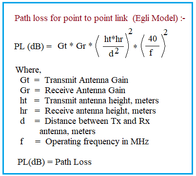MCL vs MPL: Understanding the Key Differences
Advertisement
This article compares MCL (Maximum Coupling Loss) and MPL (Maximum Path Loss) and highlights the key differences between these terms, which are often used in the context of cellular IoT (Internet of Things).
MCL | Maximum Coupling Loss
- MCL is defined as the maximum allowable loss in conducted power level. In essence, it represents the amount of signal loss a system can tolerate without experiencing operational issues.
- It is calculated as the difference between conducted power levels measured at the transmitter antenna port and the receiver antenna port.
- 3GPP (3rd Generation Partnership Project) has chosen MCL as a key metric for evaluating coverage enhancements.

MPL | Maximum Path Loss
- MPL refers to the loss in the signal path of radiated power as it travels from the transmitter to the receiver.
- Several factors contribute to this loss, including propagation loss, building penetration loss, and distance-dependent attenuation.
- MPL is calculated as the difference between the measured radiated power level at the transmitter and the power level measured at the receiver antenna.
- Importantly, the gains of both the transmitter and receiver antennas are considered when calculating MPL.
 RF
RF



